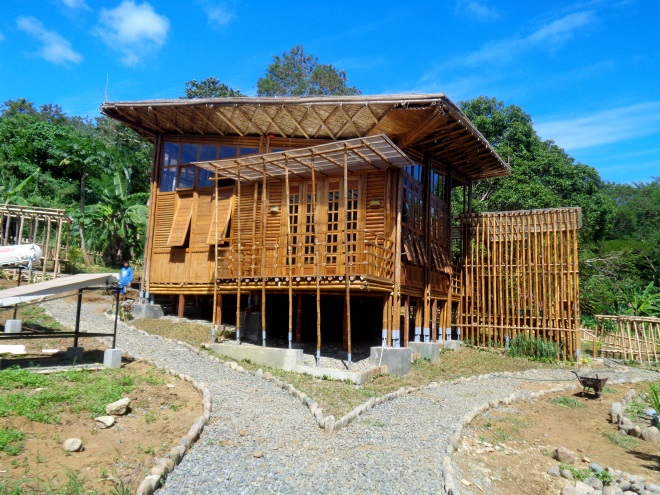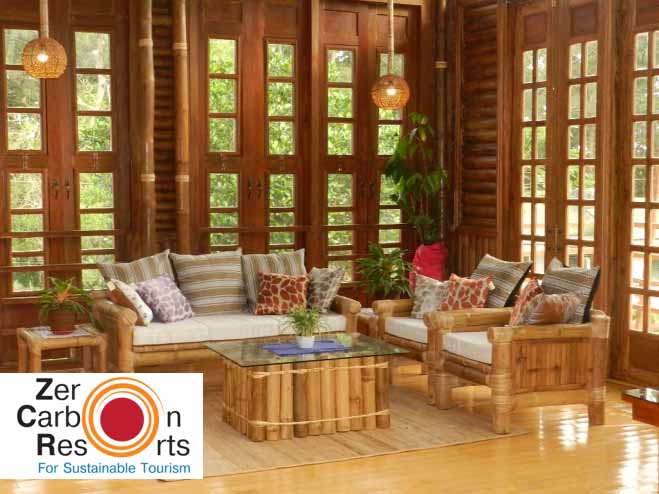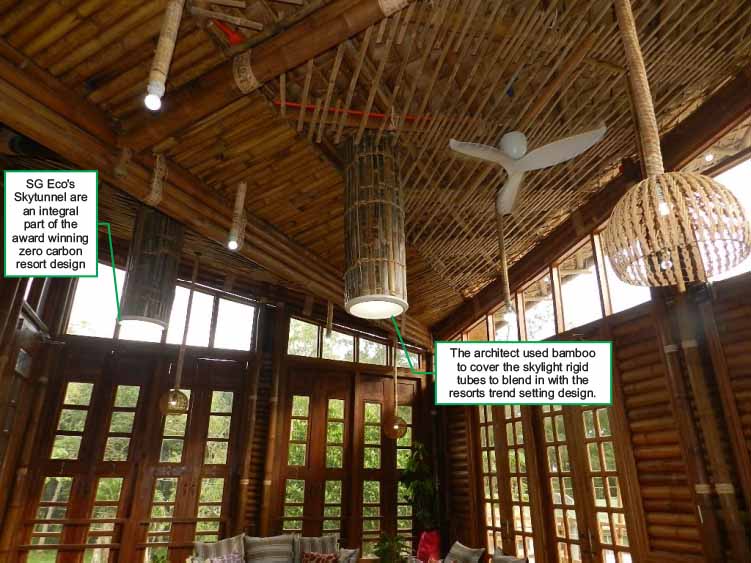
Award Winning Resort Design Utilizes SG Eco Industries' patented Skytunnel Rigid Tube Skylight

Manila 29th October, 2015 Today, in a top-rank ceremonial event in the course of the tenth “Global Forum on Human Settlements” Dr. Robert Wimmer chairman of GrAT- Center for Appropriate Technologies received the “Global Human Settlements Award on Planning and Design” in the UN Headquarter in New York for the “Zero Carbon Resorts” demonstration building, an outcome of a Switch Asia project funded by EU.
The Global Human Settlement Award is an annual worldwide prize launched by Global Forum on Human Settlement (GFHS) to promote exemplar contributions towards sustainable development. The Zero Carbon Resorts Demonstration Building – Energy and water self-sufficient building in the Philippines stood out with excellent planning and design for sustainability and convinced the committee of experts in the jury.
The ZCR cottage is the first building in the Philippines that doesn’t need electricity grid nor water and is literally carbon neutral. This is a project made possible through the funding of the European Union and implemented by the lead organization, GrAT-Center for Appropriate Technology along with local partner, the Palawan Council for Sustainable Development as well as architects from Green AP (Green architects of the Philippines) who joined the project´s training program.
It is run with only 4% of electricity compared to standard resort buildings. All water needed is supplied from rainwater. Even the wastewater is treated on site and nourishes the garden plants. The building materials mostly came from nearby local sources, including local skill. Traditional knowledge is merged with modern design and requirements. Cost-wise it can cope with conventional buildings and operations are much lower. A range of integrated innovations achieved this amazing building performance.
Among the sustainability aspects of the building is the fact that the cottage is made of renewable resources and regionally available materials such as bamboo, wood, clay and anahaw leaves. The design elements of the cottage are mostly made from rattan or locally known as “Yantok or Uway” and were crafted by indigenous people in the area. Wood is also used in the cottage, especially for parts of the flooring, connecting elements and interior furniture. Overall, the building minimized the use non-renewable resources.
The ZCR showcase cottage achieved thermal comfort by means of design and construction principles rather than by using electricity. Design and construction principles include shading and maximum use of natural ventilation through floors slats, ventanillas, big windows and openings at strategic locations. The ZCR cottage is a structure on stilts, inspired by the Philippine iconic “bahay kubo” and merged with modern technology and up to date design.
Solar PV panels are the main source of electric power for the entire cottage. Water heating and cooking also uses energy from the sun. For lighting, sunlight is channelled into the building via solar lighting tubes. Using a diverse range of innovative applications, the electricity consumption of the ZCR cottage was cut down to only 4% of what a conventional vacation house consumes.

The butterfly design of the roof allows central collection of rain water. With only 10% of the annual rainfall hitting the roof it can supply all water needs in the building. The use of water efficient devices such as a low consumption water closet, low flow shower heads and faucets reduced the water demand as well as the waste water volume.
Waste water is also treated on site and nutrients are supplied to the garden by the natural water treatment system below the surface. Overall it is a perfect example for off grid island Resorts.
The building is the flagship of the larger Zero Carbon Resorts project which has gathered over 600 SME tourism companies all over the Philippines and is successfully expanding to Thailand as well.
Astonishing cost savings have been achieved for these companies with the guidance of the project team, following an especially designed methodology. 150 companies were analyzed by the ZCR team and achieved monetary savings of five million dollar per year. At the same time the carbon emissions equivalent to 6000 cars are avoided every year as well as 478 million liters of water and 2 million liters of fuel.
Several members of the project such as Daluyon Beach and Mountain Resort, Amarela Resort, The Manor have received the ASEAN Green Hotel award for their achievements, and a Philippine national green hotel awarding scheme in collaboration with DOT is under way.
The project also promotes the integration of the food supply in a resort or hotel as part of the sustainable supply chain strategy by producing and consuming local and organically grown food which can be observed outside the cottage.
Additionally, the whole building performance is monitored and analysed for knowledge transfer and dissemination. Sensors inside the building measure indoor temperature and humidity. The data are analyzed and shared with policy makers to have a basis for the revision of standards and guidelines for buildings and energy systems in the Philippines.
This award winning building is open to the public and acts as the learning center of the Zero Carbon Resorts project. It is located in Palawan at the Training Center of project partner PCSD.
A number of “Do It Yourself” appropriate technologies that were developed for the less wealthy within the capacity building program of the ZCR project such as solar water heater, improved cook stoves, biogas digester, and rice husk gasifier are showcased in the area.
The project is still welcoming new members who want to follow the path of sustainable tourism through resource and cost savings.







